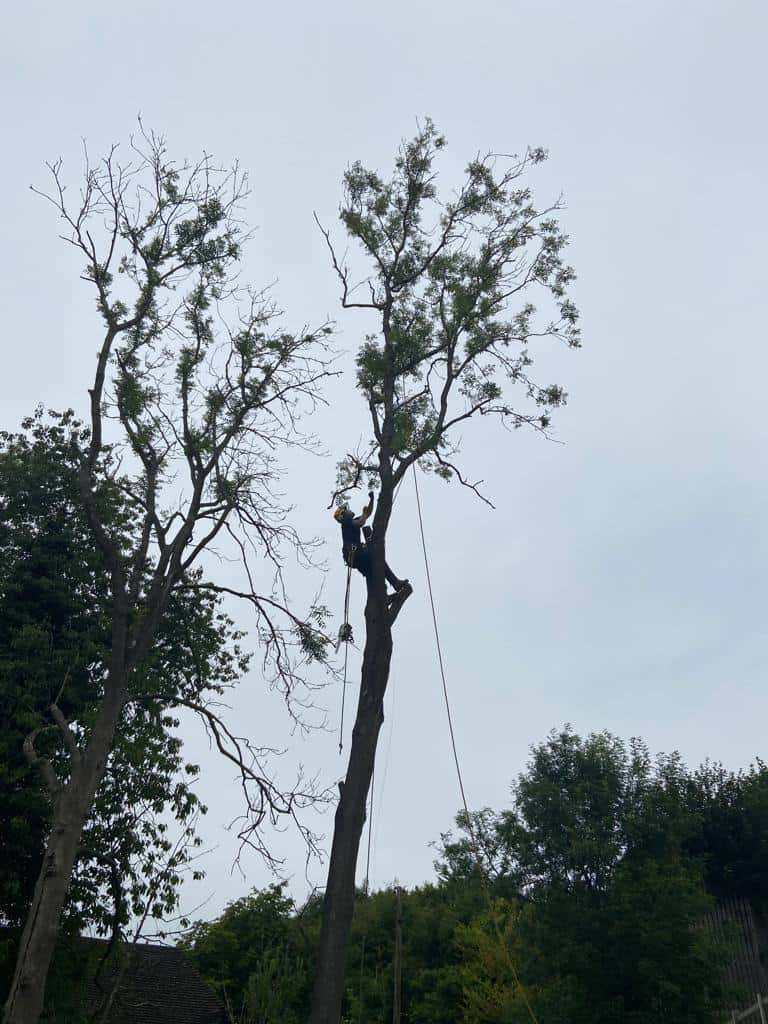Trees are a wonderful addition to any garden, providing beauty, shade, and shelter. However, there are times when trees become a problem rather than an asset. Whether due to disease, damage, or growth patterns, some trees may need to be removed entirely to ensure the safety and health of your property. At Linton Tree Surgeons, we understand the importance of tree care, and we’re here to help you identify when it’s time to remove that problem tree.
In this article, we’ll cover five key signs that indicate it may be time to fell a tree and how professional tree surgery can prevent further damage.
1. Severe Leaning or Instability
One of the first signs that a tree needs to be removed is when it starts to lean or show signs of instability. While some trees may naturally lean in one direction, a pronounced or sudden lean can indicate serious issues with the tree’s health or root system.
- Root damage: If the roots are damaged or compromised—whether from disease, pests, or soil erosion—the tree may become unstable and prone to toppling, especially in high winds or storms.
- Potential for falling: A leaning tree poses a risk to nearby structures, vehicles, or people. If a tree is leaning dangerously towards your home or driveway, it’s important to take action before an accident occurs.
If you notice that a tree is leaning significantly or shows signs of being unstable, it’s best to consult a tree surgeon to assess whether removal is necessary.
2. Dead or Dying Tree
A tree that has died or is severely stressed will no longer be able to provide the same benefits it once did. Dead or dying trees not only become eyesores in your garden but can also be dangerous.
- Dead branches: If a tree has large dead branches or if the trunk is hollow, the risk of branches falling increases. These falling branches could damage property or harm people.
- Lack of leaves or growth: Trees that fail to sprout new leaves during the growing season or show significant signs of dieback may be nearing the end of their life cycle.
If a tree is dead or dying, it should be removed by a professional tree surgeon to prevent further risk to your property and others.
3. Pest or Disease Infestation
Trees are susceptible to a variety of pests and diseases that can affect their health and structural integrity. When a tree becomes infected, it can weaken over time, eventually becoming a safety hazard.
- Pest damage: Insects like termites or wood-boring beetles can eat through the bark and wood of a tree, causing it to weaken from the inside out.
- Fungal infections: Fungal diseases such as honey fungus or root rot can cause trees to decay and collapse. If the infection has spread too far, removing the tree may be the safest option.
If you suspect that a tree is infected with pests or disease, it’s important to call a professional tree surgeon as soon as possible to assess the situation and determine whether removal is required.
4. Excessive Overgrowth or Poor Positioning
Sometimes, a tree may not necessarily be unhealthy but simply grows in a way that is problematic for your property. Overgrown branches or roots can lead to damage to nearby structures, fencing, or even underground pipes.
- Overhanging branches: If a tree’s branches are too close to your house or utility lines, they can cause damage to the roof, windows, or electrical cables. Overgrown branches can also obstruct views or block sunlight from entering your home.
- Root intrusion: Some trees have invasive root systems that can damage foundations, driveways, and even underground plumbing.
When a tree’s growth negatively affects the functionality or safety of your property, it might be time to consider removal. A tree surgeon can help determine if the tree’s growth can be managed or if it needs to be felled.
5. Excessive Damage from Storms or Winds
Trees that suffer from storm damage or high winds can become structurally compromised, even if they appear healthy on the surface. A tree that has lost large limbs or has a split trunk should be carefully inspected by a tree surgeon.
- Broken branches: If a tree has suffered significant damage during a storm, large branches may be hanging precariously or completely broken off. These branches may continue to pose a hazard until they are safely removed.
- Split trunks: A split trunk can compromise the structural integrity of the tree, making it prone to further damage and potentially causing it to fall.
If a tree has been damaged by a storm and appears unstable, it’s crucial to get in touch with a professional tree surgeon to assess the damage and determine whether removal is necessary.
Conclusion
While trees are a valuable asset to any property, there are times when removal is the safest and most practical option. Whether it’s due to instability, disease, overgrowth, or storm damage, there are several signs that a tree should be felled before it causes significant harm to your property. If you’re unsure about the condition of a tree on your property, it’s always best to consult a professional tree surgeon.
At Linton Tree Surgeons, we offer expert tree felling and tree surgery services in Linton, Cambridge. If you’ve noticed any of the signs mentioned above or if you simply need advice on how to care for your trees, don’t hesitate to get in touch. Our experienced team will help ensure the safety and health of your garden. Contact us today to arrange an inspection or consultation.
Call us on: 01223 919 495
Click here to find out more about Linton Tree Surgeons
Click here to complete our contact form and see how we can help with your tree needs.

